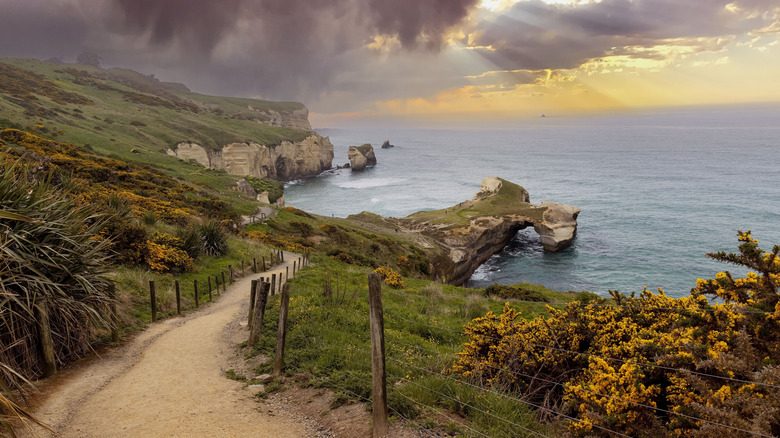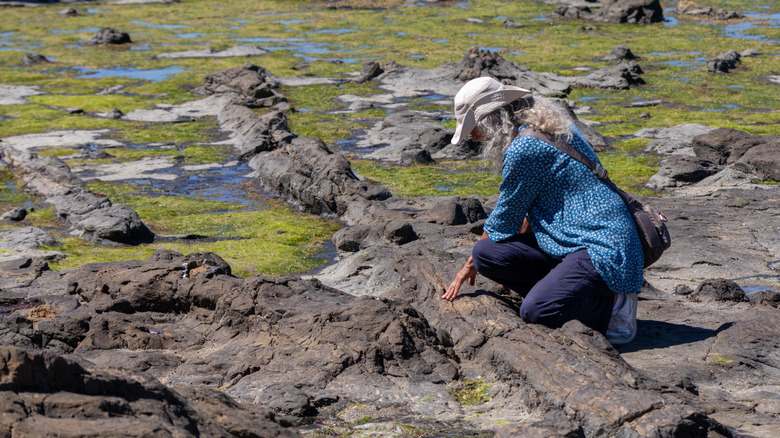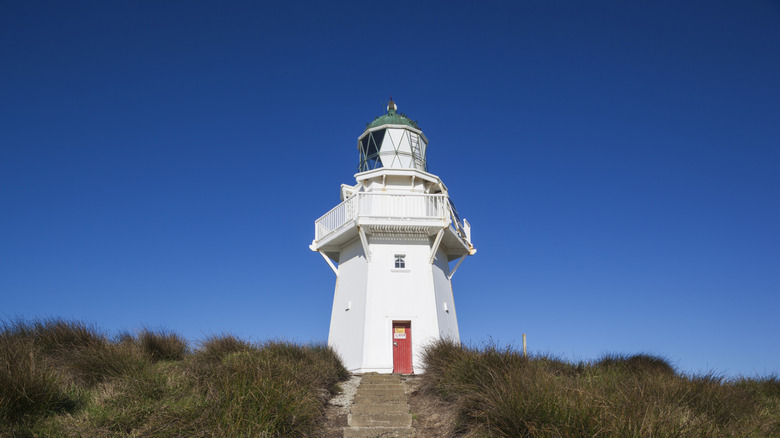New Zealand's Scenic Heritage Trail Lets You Explore A Petrified Forest & Unique Wildlife
Despite two decades of massively increased tourism to New Zealand partially as a result of the success of the "Lord of the Rings" film trilogy, there are still some sections of the multi-island nation that remain relatively remote and isolated. The Catlins are one such area. Tucked deep into the far southern reaches of the South Island, this region is a land of waterfalls, craggy coasts, petrified forests, and unique wildlife. And the best way to experience it all is by taking the Catlin Coastal Heritage Trail (CCHT).
An offshoot of the more widely traveled Southlands Scenic Route, the CCHT offers visitors a chance to see a truly enchanted corner of an already magical country. (What other country do you know where a mountain is legally considered a person?) Though only 70 km (43.5 mi) from Niagara to Fortrose, the CCHT contains 13 stopping points that requires at least five full hours of exploration to fully appreciate. However, we think the time is well spent, as this is truly one of the most beautiful spots in the entire country.
Gaining access to the CCHT is something of an adventure all its own. From one of the main international airports in Christchurch or Wellington, take a connecting flight to the smaller airport in Dunedin. From there, rent a car or camper van (one of the best ways to explore New Zealand) and make your way south for two and a half hours along the Southlands Scenic Route until you reach the town of Niagara. Then your Catlins adventure can truly begin.
Waterfalls, petrified forests, and unusual dolphins can be found in the Catlins
If the name of the waterfalls at the starting point of Niagara sound familiar to you ... that's on purpose! The exceptionally small waterfall here was humorously named by a cheeky local surveyor who had seen the massive falls in New York. While they may not be the most impressive things in the world, visitors can still get a chuckle out of the local humor. Driving along this stretch of the southern coast will fill you with a sense of awe and appreciation for the native Māori who originally lived here. A stop at the Waikawa Museum showcases their way of life, as well as those European settlers who made this area their home beginning in the late 19th century.
Further exploration down the trail brings you to several ports, inlets, and coves. Porpoise Bay is a special location where you can see something no one else in the world can see: Hector's dolphins. These dolphins are notable for the black strap along their back, and are only found off the coast of southern New Zealand.
A short drive to Curio Bay brings you to another unique site: a petrified forest. This fossilized forest is thought to be over 160 million years old. Here you can see tree stumps and fern imprints that date back to the Jurassic Period. The nearby Tumu Toka Curioscape is an interactive museum and campground that provides a truly immersive experience into this truly unique section of New Zealand nature.
Southern slopes and scenic lighthouses
Another unique landmark on a scenic route filled with unique landmarks is the most southerly point on the South Island of New Zealand: Slope Point. Thought to be named for the sloping topography that faces the sea, the trail access to this point is limited during the year. Closed from September to November to account for lambing season, visitors will have to make their way to this special landmark during the other months. And seeing as July is one of the best times of the year to visit New Zealand, we don't expect this to be a problem.
Towards the end of the trail as you head to the westerly terminus of Fortrose is the Waipapa Point Lighthouse at the Waipapa Reservation Area. This is a significant location, as it overlooks the Waipapa Reef. It was here in 1881 that New Zealand's worst civilian maritime disaster occurred with the sinking of the SS Tararua that claimed 131 lives. The beautiful wooden lighthouse was built three years later, and remains operational today. Visitors can walk around the reservation area, reading informative plates that tell the unique history.
Thanks to their closeness, it is easy to see all of these sites in a single day. Take your time and experience the unique heritage and nature that makes the Catlins Coastal Heritage Trail so fascinating.


